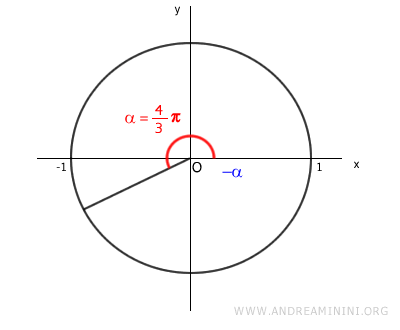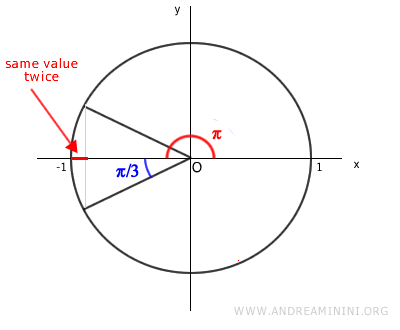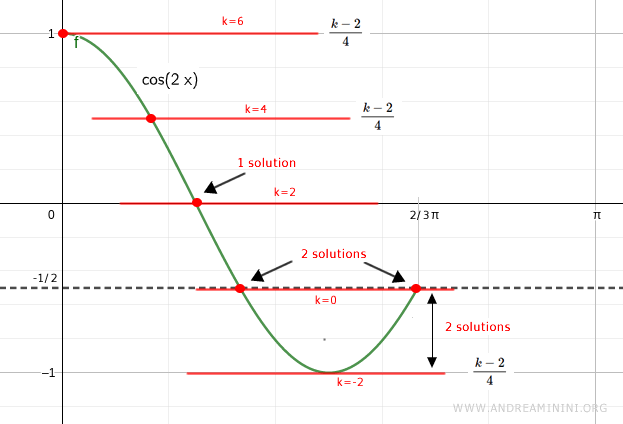Parametric Trigonometric Equations
A parametric trigonometric equation is a trigonometric equation, whether elementary or complex, that involves a real parameter \( k \). For example: $$ \cos x = 2k - 1 $$
The solutions to a parametric trigonometric equation depend on the specific value of \( k \).
As such, a parametric trigonometric equation may have a single solution for certain values of \( k \), multiple solutions, or no solution at all for others.
How to Approach a Parametric Trigonometric Equation
To analyze a parametric trigonometric equation, I study how its solutions vary as the parameter \( k \) changes.
A Practical Example
Let’s consider the following trigonometric equation:
$$ \begin{cases} 4 \cos 2x - k + 2 = 0 \\ \\ 0 \le x \le \frac{2}{3} \pi \end{cases} $$
This is an elementary trigonometric equation.
It is parametric because it includes a parameter \( k \), which can take any real value.
Moreover, the analysis of this equation is restricted to the interval \( x \in [0, 2\pi/3] \).
I first isolate the cosine function in the equation:
$$ \begin{cases} \cos 2x = \frac{k - 2}{4} \\ \\ 0 \le x \le \frac{2}{3} \pi \end{cases} $$
In the interval \( x \in [0, 2\pi/3] \), the argument (angle) of the function \( \cos 2x \) ranges from 0 to \( 4\pi/3 \) radians.
$$ 2x = \begin{cases} x = 0 \rightarrow \alpha = 2 \cdot 0 = 0 \\ \\ x = \frac{2}{3} \pi \rightarrow \alpha = 2 \cdot \frac{2}{3} \pi = \frac{4}{3} \pi = \pi + \frac{1}{3} \pi \end{cases}$$
Thus, the function \( \cos 2x \) takes values between -1 and 1 within the interval \( x \in [0, 4\pi/3] \).

Next, I determine when the right-hand side, \((k-2)/4\), of the parametric equation falls within the interval [-1, 1].
$$ y = \frac{k - 2}{4} $$
This equation behaves as follows:
- When \( k = 2 \), \( y = 0 \).
- When \( k = 6 \), \( y = 1 \).
- When \( k = -2 \), \( y = -1 \).
- For \( k < -2 \) or \( k > 6 \), \( y \) lies outside the interval [-1, 1].
Hence, the parametric equation has at least one solution for \( k \in [-2, 6] \) and no solutions outside this range.
Next, I determine whether the equation has one or multiple solutions within \( k \in [-2, 6] \).
In the interval \( x \in [0, 4\pi/3] \), the function \( \cos 2x \) takes the same value twice when the argument (angle) lies between \( \pi - \pi/3 \) and \( \pi + \pi/3 \).

I calculate the cosine value for \( \cos 4\pi/3 \).
I rewrite the argument \( 4\pi/3 \) in an equivalent algebraic form:
$$ \cos \frac{4}{3} \pi = \cos (\pi + \frac{1}{3} \pi) $$
Using the properties of associated angles for cosine:
$$ \cos (\pi + \frac{1}{3} \pi) = \cos (\pi - \frac{1}{3} \pi) $$
and:
$$ \cos (\pi - \frac{1}{3} \pi) = - \cos (\frac{1}{3} \pi) $$
This simplifies the calculation by bringing the angle into the first quadrant:
$$ \cos \frac{4}{3} \pi = - \cos (\frac{1}{3} \pi) $$
Knowing that the cosine of \( \pi/3 \) (60°) is \( 1/2 \):
$$ \cos \frac{4}{3} \pi = - \frac{1}{2} $$
Thus, the trigonometric equation has two solutions when \( \cos 2x \in [-1, -1/2] \) and a single solution when \( \cos 2x \in (-1/2, 1] \).
$$ \begin{cases} \cos 2x = \frac{k - 2}{4} \\ \\ 0 \le x \le \frac{2}{3} \pi \end{cases} $$
Now, I determine when the right-hand side of the parametric equation falls within the interval [-1, -1/2]:
$$ y = \frac{k - 2}{4} $$
The equation equals \( y = -1 \) when \( k = -2 \):
$$ -1 = \frac{k - 2}{4} $$
$$ -4 \cdot 1 + 2 = k $$
$$ k = -2 $$
The equation equals \( y = -1/2 \) when \( k = 0 \):
$$ -\frac{1}{2} = \frac{k - 2}{4} $$
$$ -4 \cdot \frac{1}{2} + 2 = k $$
$$ -2 + 2 = k $$
$$ k = 0 $$
Therefore, within the interval \( k \in [-2, 0] \), the equation has two solutions.

Conversely, within the interval \( k \in (0, 6] \), the equation has only one solution.
For any other value \( k \notin [-2, 6] \), the equation has no solutions.
And so on.
